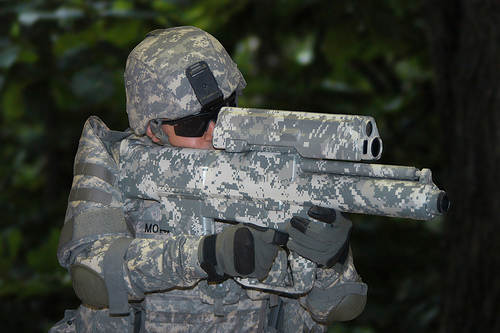Table that Allows Sharing Pictures on Handsets
Amnesia Connect is the latest invention from a company called Amnesia Razorfish. It allows different owners of smartphones and tablets to share visual data by putting their devices on a special table. The latter identifies images stored on a handset or tablet and helps the user share them by dragging them over to another device on the table.
Solar-Powered Roads
 It takes a lot of time and money to clean the roads in places that witnessed the fall of an abundant amount of snow. This is the reason why an associate professor of civil and environmental engineering at Worcester Polytechnic Institute proposed the idea of solar-powered roads that during winter will never be covered in snow.
It takes a lot of time and money to clean the roads in places that witnessed the fall of an abundant amount of snow. This is the reason why an associate professor of civil and environmental engineering at Worcester Polytechnic Institute proposed the idea of solar-powered roads that during winter will never be covered in snow.Holographic TV System
A team of scientists from the MIT Media Lab is on its way to developing a holographic television system, similar to the one that appeared on the Star Wars.
Robotic Waiter Able to Take and Delivers Orders
Researchers from Bangkok University were the ones to initiate an original project entitled MK Robot Project, which involves the creation of robotic waiters that will be able to carry dishes, take and deliver orders
Smallest Camera with Zoom
Scientists from the Northwestern University and the University of Illinois were able to create the world's first tiny eyeball camera will a zoom feature.
Garbage Can that Responds to a Person's Activity
This invention was presented at CES and represents a garbage can equipped with sensors that identify one's activity to open the can and hold it more a specific period of time.
LED Display Equipped with a Solar Panel
The display with a built-in solar panel is the invention of a Bulgarian company called Megatex. It is worth mentioning that this is the world's first display to have this feature.
Packaging that Signals the Buyer When Food is Spoiled
This invention was created by Scottish scientists. Their food packaging changes color when it spots a food that is going bad. This smart packaging will not only help buyers but marketers as well due to the fact that it offers some additional information.
Drinking Fountain that Harnesses Solar Energy
By making use of solar power, a drinking fountain, developed by students from the California Lutheran University (CLU), will surely be of much help to thirsty young people during hot Californian days.
BioKey - High-Tech Security System for Bikes
Invented by Hawk Systems Inc, the BioKey is used to help motorcycle owners to start their bike with a simple touch. Due to a technology that activates the bike only by the owner's touch, stealing is impossible.





